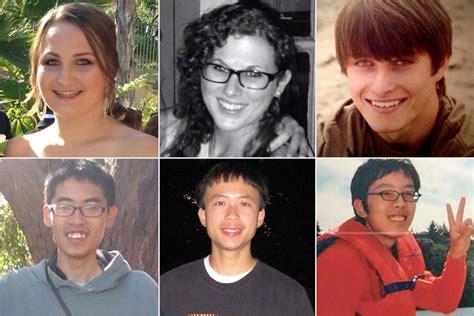The 2014 Isla Vista killings, also known as the Isla Vista shootings, were a tragic series of events that shook the small college town of Isla Vista, California, located near the University of California, Santa Barbara (UCSB). On May 23, 2014, a 22-year-old man, Elliot Rodger, embarked on a violent rampage that resulted in the deaths of six innocent people and injured 14 others. This devastating incident sent shockwaves through the community, raising questions about the motives behind the attack and the social and cultural factors that may have contributed to it.
Background and Events Leading Up to the Tragedy
Elliot Rodger, the son of a Hollywood film director, had a history of mental health issues and had been diagnosed with high-functioning autism and obsessive-compulsive disorder. He had also been receiving treatment for his conditions, but his family and friends reported that he had become increasingly withdrawn and isolated in the months leading up to the attack. Rodger’s online activities, including his YouTube channel and social media profiles, revealed a deep-seated resentment towards women and a sense of entitlement, which he expressed through misogynistic and hate-filled rants.
On the day of the attack, Rodger uploaded a 141-page manifesto to his website, detailing his twisted worldview and his plan to exact revenge on the women who he felt had wronged him. He also posted a video on YouTube, in which he outlined his intentions and expressed his anger towards the women of UCSB, whom he blamed for rejecting him. The video has since been removed from the platform, but its contents have been widely reported and analyzed.
The Attack and Its Aftermath
At approximately 9:27 p.m. on May 23, 2014, Rodger began his attack by stabbing three men to death in his apartment: Cheng Yuan Hong, 20, George Chen, 19, and Weihan Wang, 20. He then drove to the Alpha Phi sorority house, where he shot and killed Katherine Cooper, 22, and Veronika Weiss, 19. Rodger continued his rampage, shooting and injuring several other people, including a UCSB student who was shot in the leg.
As the police responded to the scene, Rodger exchanged gunfire with officers before crashing his car and taking his own life. The attack lasted approximately 10 minutes, during which time Rodger killed six people and injured 14 others.
Investigation and Response
The investigation into the Isla Vista killings was led by the Santa Barbara County Sheriff’s Office, with assistance from the FBI and other law enforcement agencies. The probe revealed that Rodger had been planning the attack for months, using his manifesto and online activities to outline his motives and preparations.
In the aftermath of the tragedy, the University of California, Santa Barbara, and the surrounding community came together to mourn the victims and provide support to those affected. The university established a memorial fund to honor the victims and provide assistance to their families.
Social and Cultural Implications
The Isla Vista killings sparked a national conversation about gun control, mental health, and the objectification of women. The tragedy highlighted the need for greater awareness and understanding of the warning signs of violent behavior, as well as the importance of addressing the root causes of misogyny and hate.
The incident also raised questions about the role of social media in perpetuating hate speech and the glorification of violence. Rodger’s online activities, including his YouTube channel and social media profiles, had been a platform for him to express his twisted worldview, and many have argued that social media companies have a responsibility to monitor and remove hate speech from their platforms.
Conclusion
The 2014 Isla Vista killings were a senseless tragedy that resulted in the loss of six innocent lives and left a community in shock. The incident serves as a reminder of the importance of addressing the root causes of violence, including mental health issues, misogyny, and hate speech. It also highlights the need for greater awareness and understanding of the warning signs of violent behavior, as well as the importance of providing support and resources to those affected by tragedy.
As we reflect on this tragedy, it is essential to remember the victims and their families, who were affected by this senseless act of violence. We must also continue to work towards creating a society that values empathy, understanding, and respect for all individuals, regardless of gender, race, or background.
FAQ Section
What were the motivations behind Elliot Rodger’s attack?
+Elliot Rodger’s motivations behind the attack were rooted in his deep-seated resentment towards women and a sense of entitlement. He felt rejected by women and blamed them for his own failures, which he expressed through his online activities and manifesto.
How did the community respond to the tragedy?
+The University of California, Santa Barbara, and the surrounding community came together to mourn the victims and provide support to those affected. The university established a memorial fund to honor the victims and provide assistance to their families.
What lessons can be learned from the Isla Vista killings?
+The Isla Vista killings highlight the importance of addressing the root causes of violence, including mental health issues, misogyny, and hate speech. It also emphasizes the need for greater awareness and understanding of the warning signs of violent behavior, as well as the importance of providing support and resources to those affected by tragedy.



